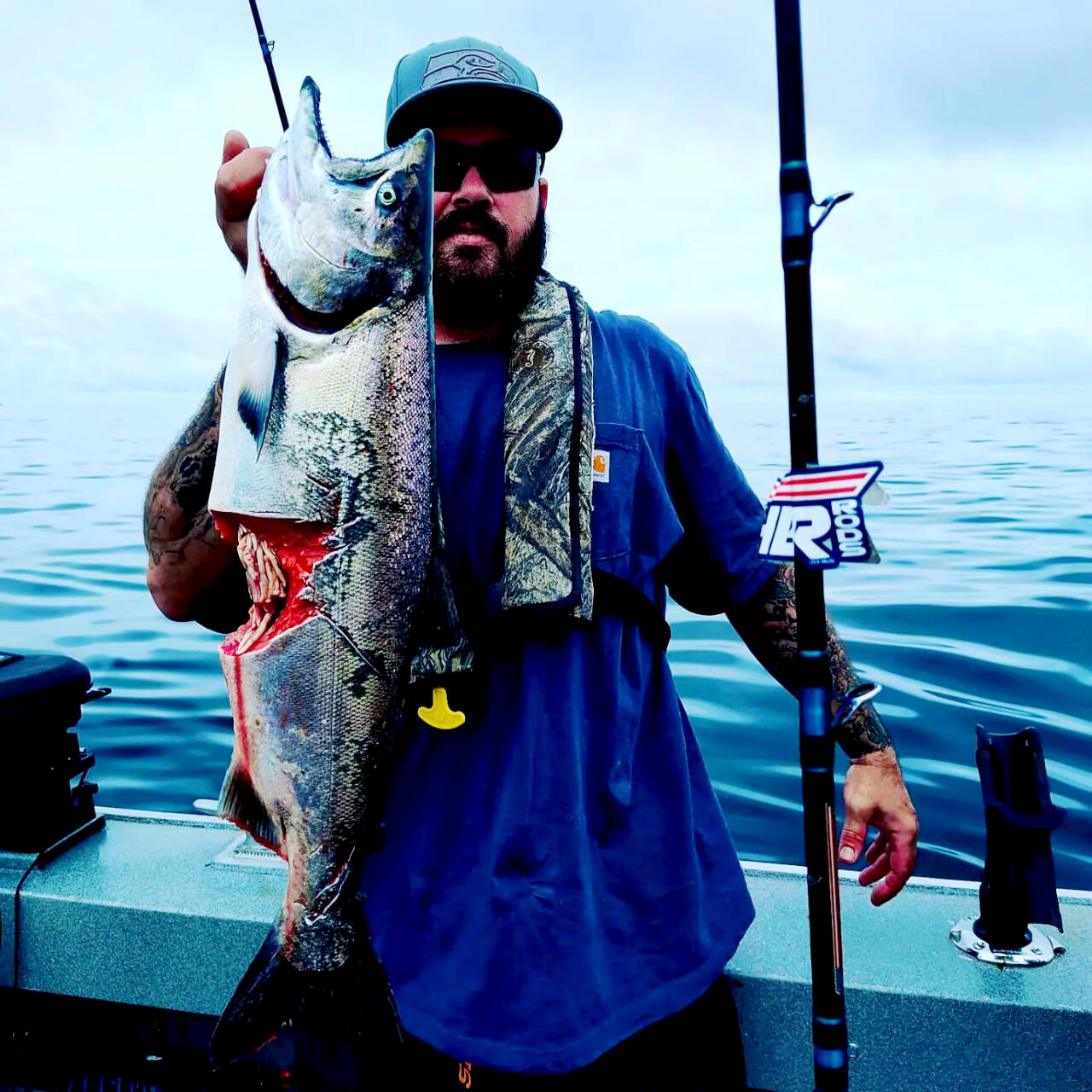THE RESISTANCE TO adding more hatchery production and therefore more salmon and steelhead to our state’s rivers and streams has puzzled me for years.
Especially since the plight of Puget Sound’s southern resident orcas and their picky dietary preference of tasty kings over nearly everything else in the sea became known to the public.
For the better part of 200 years, hatchery-origin anadromous salmon and trout have been reared and released throughout the Pacific Northwest to mitigate for lost habitat and sustain harvest opportunity.
Those better versed in the history of hatchery genetics could discuss how intermixed fish stocks are in most Olympic Peninsula rivers and how difficult it would be to find a true “wild” fish.
Natural origin fish proponents like to cite potential dilution of the gene pool and subsequent reduction of diversity through interbreeding of hatchery and wild fish, but a new study concerning steelhead in Oregon’s Hood River found different results in a 27-year long period of record.
There aren’t a lot of empirical studies on what these genetic interactions do to population productivity, so a group of biologists from environmental consulting firm Mount Hood Environmental (Ian Courter, Mark Roes, Sean Gibbs, Confederated Tribes of Warm Springs (Ryan Gerstenberger), the Lummi Tribe (Tom Chance) and the Northwest Indian Fisheries Commission (Adrian Spindle) set out to see what they could find.
The complete study appears in the Canadian Journal of Fisheries and Aquatic Sciences and is available at https://tinyurl.com/PDN-HoodRivSteel.
“We estimated the effect of the proportion of hatchery-origin spawners [pHOS], proportionate natural influence [PNI] and hatchery fish releases on natural adult winter steelhead recruitment in the Hood River in Oregon over a 27-year period of record,” the authors wrote.
“Adult winter steelhead productivity was not associated with pHOS and PNI.
“However, natural winter steelhead productivity was positively associated with ocean conditions, stream flow and hatchery fish release numbers, while negatively associated with pinniped abundance.
“Our analysis highlights the importance of quantifying the influence of hatchery programs on fish production relative to environmental factors known to affect natural-origin anadromous fish recruitment.”
Tuna on the go
It’s about time for albacore tuna far off the coast.
“Every year, July brings the annual migration of albacore tuna to the coasts of Washington and Oregon,” Quilcene’s Ward Norden said.
“Although never getting particularly close to our Olympic Peninsula, Westport has always been a popular destination for adventurous anglers willing to go out the 40 to 50 miles necessary at that point on our coast.”
Those looking for a shorter sea journey could head south.
“For an easier ride to get to the tuna, the tuna reach their closest point of approach to the West Coast of the U.S. in front of Tillamook Bay, Ore.,” Norden said.
“Albacore are often found barely 10 miles offshore and occasionally far closer. This year looks particularly good for the tuna getting very close to the mouth of the bay. The launch point is Garibaldi, Ore., which has a couple good launch ramps only a mile from the entrance. The non-resident fishing license is $23 per day and the limit is generous for tuna.
Norden said the albacore were close to the bay, five or six miles, when he sent this note on Friday.
Spinners for salmonoids
Member Ken Townsend will discuss how to make your own spinners for salmon, trout and steelhead at Wednesday’s meeting of the North Olympic Chapter of Puget Sound Anglers.
The meeting is open to all interested anglers.
Townsend will discuss how to get started, the tools and techniques required and where to find supplies.
The group meets at the Sequim Elks Lodge, 143 Port Williams Road in Sequim with people gathering at 6:30 p.m. and the meeting beginning at 7 p.m.
A short business meeting, fishing reports and a raffle drawing will follow.
Raffles are for members only, but the public can join for $25, including a monthly subscription to The Reel News.
Marine Area 9 open
Marine Area 9 (Admiralty Inlet) opened Thursday for its three-part salmon season.
The fishery is only open Thursday through Saturday through July 27 with a two salmon limit, only one of which may be a hatchery king of a minimum size of 22 inches. Releasse chum, wild coho and wild kings.
If king numbers remain, the fishery will switch to a every day fishery from July 28-Aug. 15 with the same daily limit and species limit.
A hatchery silver-focused fishery follows from Aug. 16 to Sept. 25 with no minimum size and a two-fish limit. Release all kings, chum and wild coho.
________
Sports reporter/columnist Michael Carman can be contacted at mcarman@ peninsuladailynews.com.

